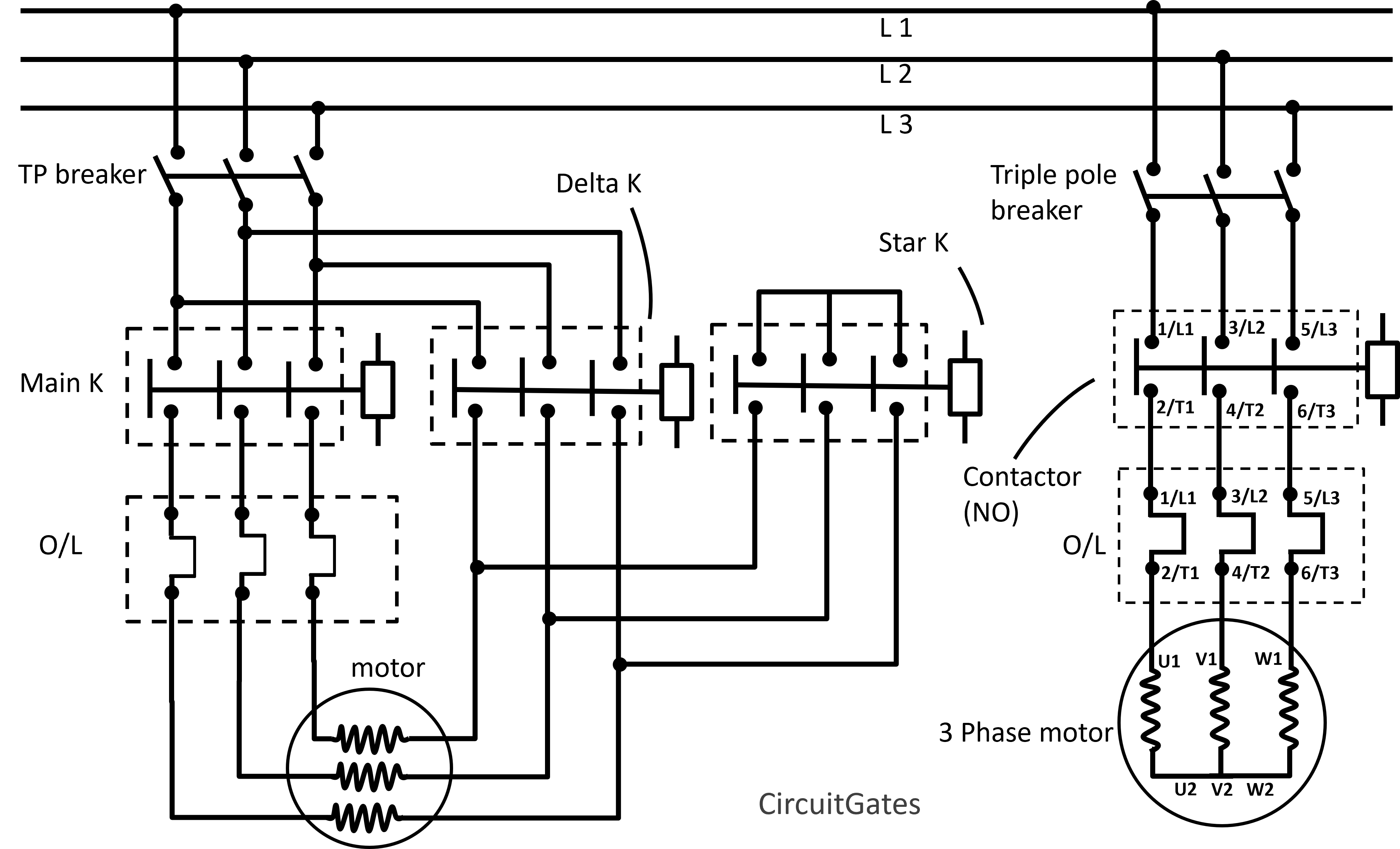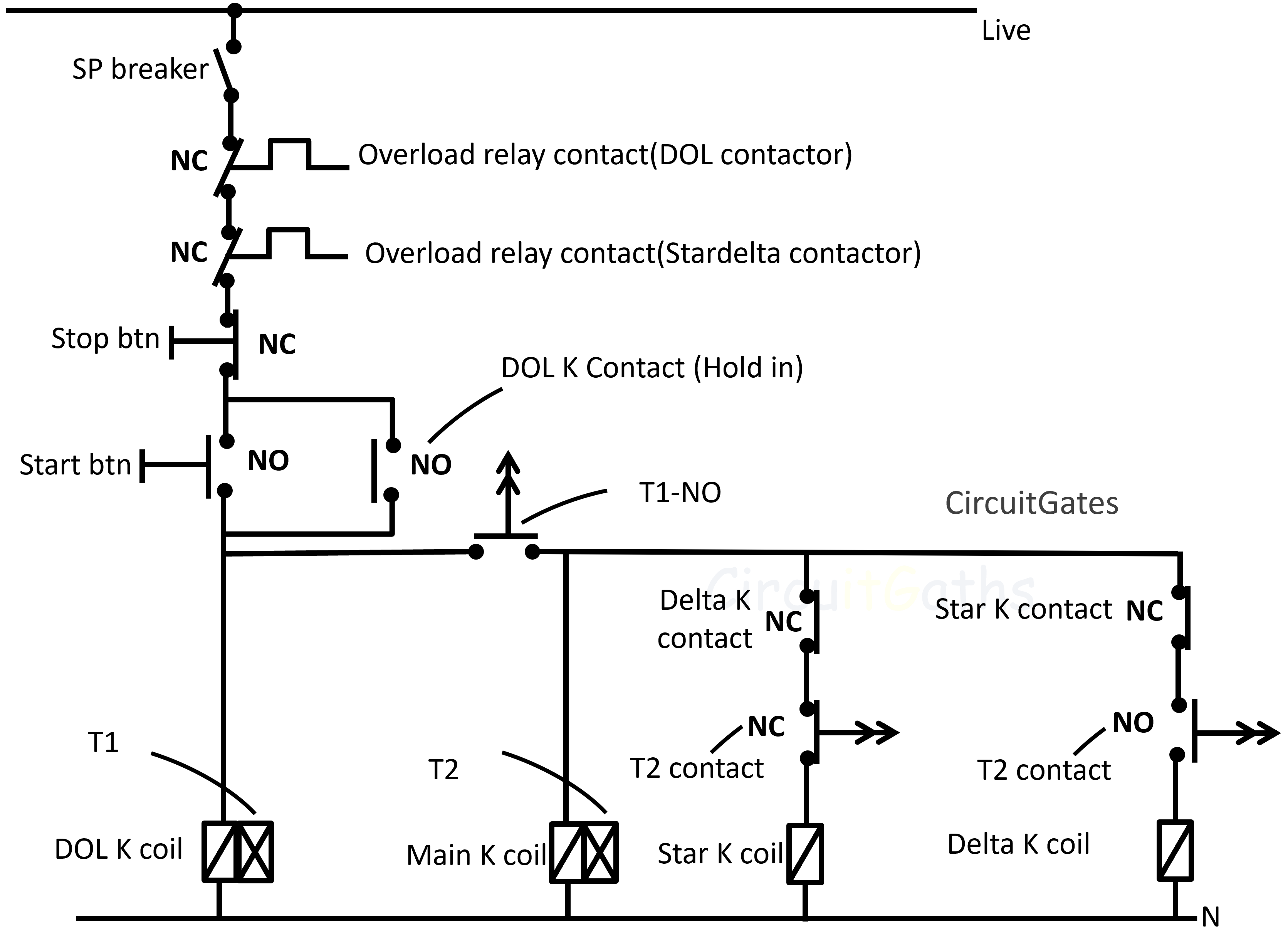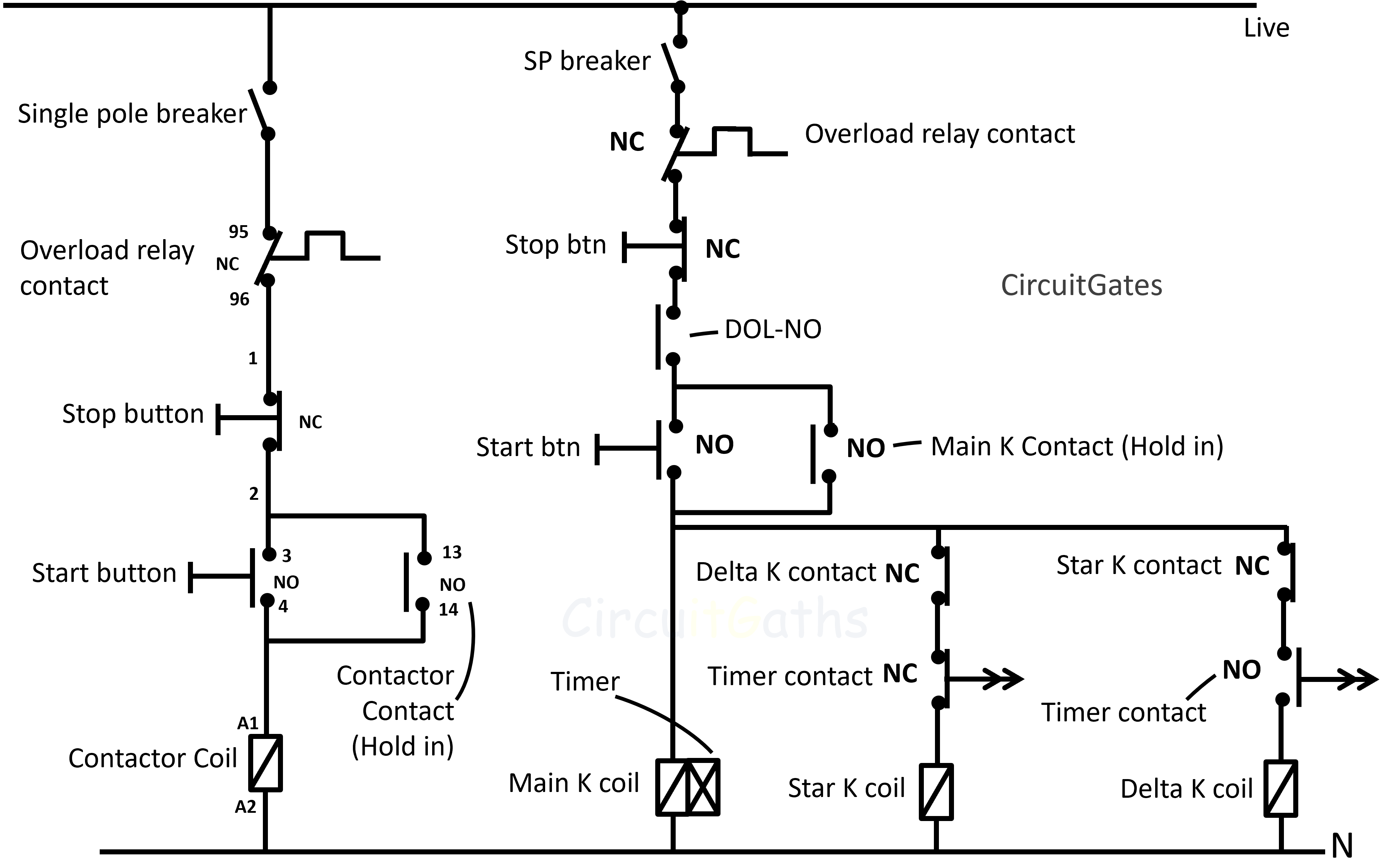How does sequential electric motor starting work?

Sequential electric motor starting involves starting of two or more electric motors, one after the other in an orderly way.
The sequential electric motor starting is most applicable in situations like production processes that involve several stages.
In production processes there are some stages that need to run first before others. When stages supposed to run first stop working, others that follow must also stop.
For example, in production of gravel, let us start with the stage of crushing rocks into gravel used in construction using the crushing machine.
After crushing, the produced gravel need to be moved to a certain place for storage using a conveyor belt.
In the example, the electric motor used to turn the crushing machine uses a stardelta starter. The other causing the belt to move uses direct online starter (DOL).
Since after crushing of rocks, we need the gravel to be moved away from the crushing machine by the conveyor belt to prevent accumulation of gravel on and in the crushing machine, this is where the sequential electric motor starting come into action.
In sequential electric motor starting we want the conveyor belt electric motor to run first before the crushing machine motor run and also if the conveyor belt electric motor stops working, the crushing machine must also stop working.
The diagrams below show the power and control circuits of the sequential electric motor starting we previous discussed. The explanation on how it works follows.
Power Circuit.

Control Circuit.

- TP Breaker - Tripple pole breaker
- SP Breaker - Single pole breaker
- K - Contactor
- btn - Button
- NC - Normally closed
- N - Neutral
- O/L - Overload relay
- NO - Normally open
- T1 - Timer one
- T2 - Timer two
Key
Explanation
In this article, we are not covering how various parts of the circuits work, as we have already discussed them in the articles on how a direct online and stardelta starters.
We are only looking on how the sequential electric motor starting works.
On the control circuit of a sequential electric motor starting we have two pneumatic timers. One labeled T2 is for switching the stardelta electric motor from star to delta.
The other labeled T1 is for putting the crushing machine electric motor in ON position after the DOL electric motor runs first for four seconds.
To start running the electric motors, the start button is pressed. This allows current to flow through the DOL electric motor contactor coil
When current flows through the DOL electric motor contactor, the power contacts of the contactor close resulting in power reaching the DOL electric motor and starts running.
The T1 timer is connected in a way such that it starts working when the DOL motor begins to run. As the DOL motor starts running, the T1 timer is switched to the ON position.
The timer T1 will count up to four seconds and close the contact connecting the stardelta electric motor control circuit labeled "T1-NO" and the stardelta electric motor begins to run.
We have already covered how a star-delta starter works, you can check out.
In the previous control circuit diagram, we use the timer to put the stardelta electric motor in on position, there is another way we can do it.
The following are two seperate control circuits of the sequential starting electric motors.

- DOL-NO - Interlock (normal open)
Key
The control circuit of a stardelta starter is connected through the normal open contact labeled "DOL-NO" of a DOL contactor such that when the DOL is OFF this contact is open and the stardelta motor can't start.
When the DOL motor is running, the contact "DOL-NO" closes, such that when the start button of stardelta starter is pressed, current can pass through allowing the stardelta electric motor to run.
Using the latter control circuits, the star-delta electric motor will not automatically starts after the DOL runs for four seconds as in the previous control circuit diagram.
The operator is needed who switches the stardelta electric motor ON after first switching ON the DOL electric motor.
If you have made it this far, thanks for reading. Please consider subscribing to our YouTube channel for more electrical tutorials.